Stop Doing Crunches: 5 Simple Mat Pilates Exercises for Serious Core Strength
Beginners welcome, and no reformer needed.
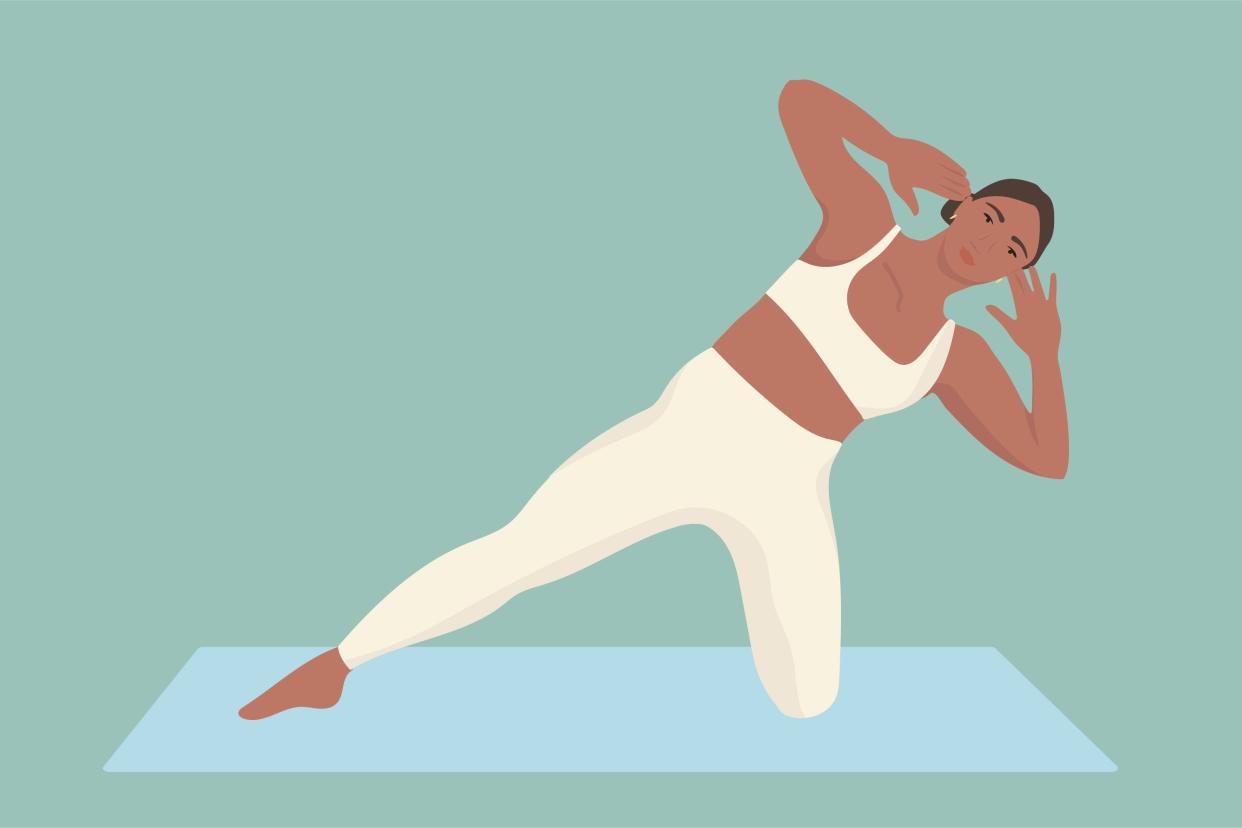
Grace Canaan
You’ve likely heard of Pilates, which has become such a popular way to exercise these days, but the origins of this exercise practice might surprise you. It was not used as a form of general fitness or a popular workout class as we know it today—it was initially developed as an innovative rehabilitation method for wounded soldiers.
“Pilates was first created by Joseph Pilates in the early 20th century as a means to support and rehabilitate the body,” says Bianca Melas, certified Pilates instructor at Alo Moves. “He began helping war veterans who were injured and unable to walk by attaching springs to their beds and guiding them through movement to rebuild their strength.”
Today, Pilates is an excellent way for anyone to workout, but especially for people with injuries and physical challenges, because it builds muscle and strength, particularly in the core, through low-impact movement. “Pilates helps to reduce back pain through building a stronger core, boosts mood, improves sleep, prevents injuries, and detoxifies through the breath and movement that supports lymph flow, and it enhances balance, flexibility, and mobility,” Melas adds.
But don’t be fooled, while Pilates is a low impact form of movement, if you’re doing it properly, you will feel the burn. If you’ve been considering trying Pilates or integrating it into your current fitness regimen, here’s what you need to know as well as some exercises great for beginner to intermediate levels.
Related:3 Low-Impact Types of Exercise That Relieve Stress While Building Strength
Types of Pilates
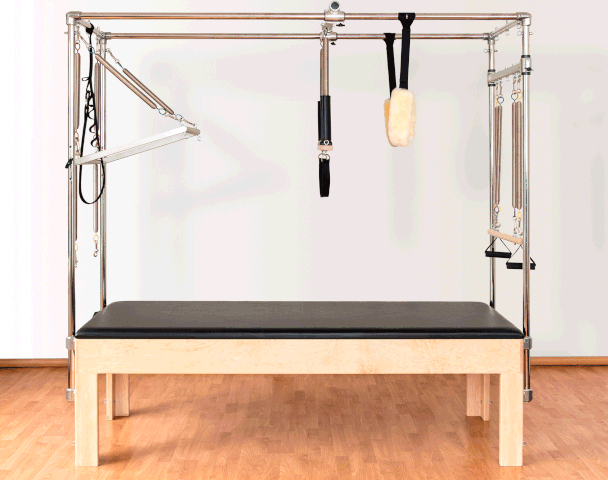
Getty Images
There are several ways to do Pilates, including using a Cadillac (the original Pilates machine, shown above), tower, Wunda Chair, reformer, and a plain exercise mat. Today, reformer and mat Pilates are the most common ways to practice Pilates.
Reformer Pilates
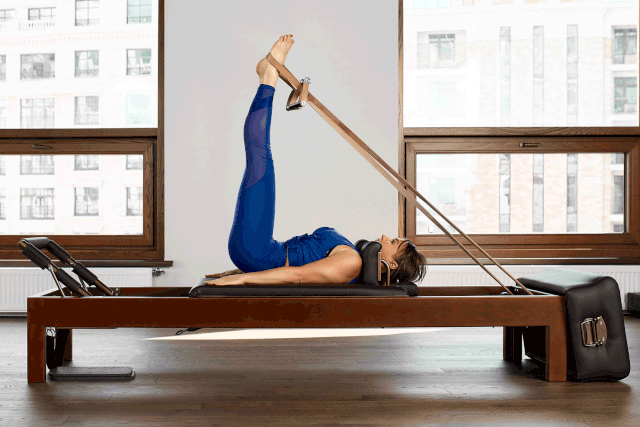
Getty Images
Reformer Pilates has many advantages. “Reformer classes are great to start challenging your body in new ways, once you've been practicing on the mat and have learned the basics. With the reformer you can typically add more resistance, which may help you to build muscle more easily” says Certified Pilates Instructor and founder of the Align app, Bailey Brown. “It also adds another level of balance and stability work as you flow through exercises on the machine.”
The main disadvantage of reformer Pilates is that it requires a bit of an investment. Classes can be costly. Home reformers are also expensive and take up a large amount of floor space.
Mat Pilates
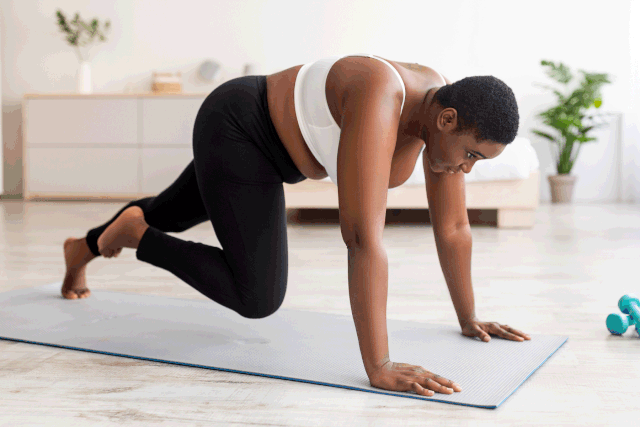
Getty Images
While a bit different in form, but following similar principles, mat Pilates works with your body weight to engage and strengthen your muscles. “It’s also low impact, so there’s less stress on our joints,” Melas says. “I also find mat Pilates to be incredibly grounding—it’s just you and your mat, so you can become more in touch with your body and the way it moves, as well as your balance. The flows are also endless.”
Mat Pilates is also more accessible and just as effective as reformer Pilates. And it’s something even beginners can do at a low cost or for free. Tons of streaming apps like the Alo Moves app has plenty of Pilates classes available, as well as yoga and other programs, while the Align app exclusively focuses on Pilates. If you’re a Peloton app user, you’ll be happy to know it recently added Pilates to its menu of fitness choices. Want to try Pilates for free? There are plenty of classes available on YouTube, including Blogilates and Jessica Valent Pilates.
Brown recommends investing in a high-quality Yoga or Pilates mat. “Ideally one that’s thick and non-slip. It's important for you to be safe, and comfortable when working out without professional guidance and supervision,” she says. “Having the proper mat can make you feel more comfortable while exercising, which allows you to focus more on what's going on in your body.”
You may also want to invest in a few pairs of inexpensive grip socks if you plan on doing Pilates regularly. Some programs may also require gliders.
Related:6 Crunch-Free Core Exercises to Fire Up Your Abs
How to Start Practicing Pilates
Consider taking a couple of intro classes to learn the basics.
If you’re a Pilates (or exercise) beginner in general, you may want to try taking an in-person class or two specifically for beginners in order to get a better sense of proper form, safe movement, modifications, and more intro instructions. Mat pilates in particular can be slightly challenging to get the hang of on your own, especially if there isn’t a live instructor.
“A good instructor will help to guide you through exercises so you know how your body should be moving and where you should be feeling it,” Brown says. “Listen closely to the instructions given, but then take some time to tune into your body. Over time, the mind-muscle connection becomes intuitive, but for the first while it can be a good idea to slow movements down, think of where the movement is coming from and ensure you're feeling it in the right place.”
Use a mirror as a guide, if you have one handy.
Both Melas and Brown recommend working out in front of a mirror, so you can check your form, especially if you’re following along to a video. “Ideally, set your mat up with a mirror nearby so you can quickly check your form and ensure it looks the same as the instructor’s demonstration,” Brown says.
Start equipment-free.
If it’s your first time trying a movement that requires additional equipment, you may want to put those accessories to the side, at least for the first few times. “Try it without weights first until you nail the movement,” Melas says.
Move with mindful intention.
Melas also suggests utilizing mindfulness techniques. “Another tip is to close your eyes and turn your attention inwards,” she says. “Think of the muscle you’re trying to recruit, touch it, and then use the power of the mind to keep thinking about that muscle, creating neural pathways and helping to engage that muscle. The mind really is powerful!”
Beginner Pilates Exercises for Core Strength
Pilates is an especially renowned type of exercise for its core-strengthening benefits. Here, Melas shares her favorite Pilates ab exercises for beginners.
Single Leg Lowers
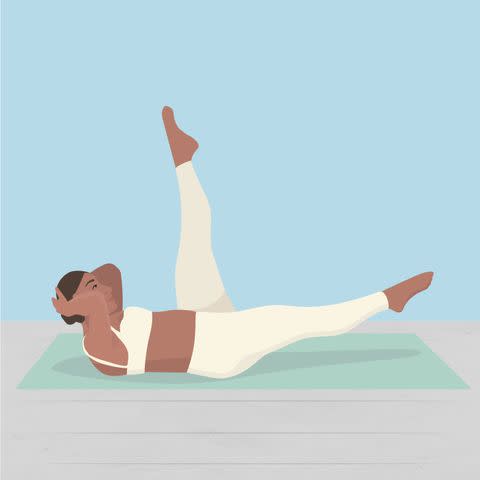
Grace Canaan
This move engages the upper and lower core.
Lie on your mat face up and bring your hands behind your head for support. Inhale to prepare and exhale as you float your legs to the sky. With toes pointed and legs straight, slowly lower one leg, then using an exhale to engage your core muscles, float that leg back up to the sky. Repeat, alternating each side and moving with your breath.
Straight-Leg Bicycles

This move engages the upper and lower core and your obliques.
Lie on your mat face up and bring your hands behind your head for support. Inhale to prepare and exhale as you float your legs to the sky. With toes pointed and legs straight, slowly lower your right leg while lifting and rotating your right shoulder toward the left leg still in the air. Use an exhale to float your right leg back up to the sky, then flow into lowering your left leg and repeating rotation on the opposite side. Repeat, alternating sides.
Oblique Double Knee Tucks
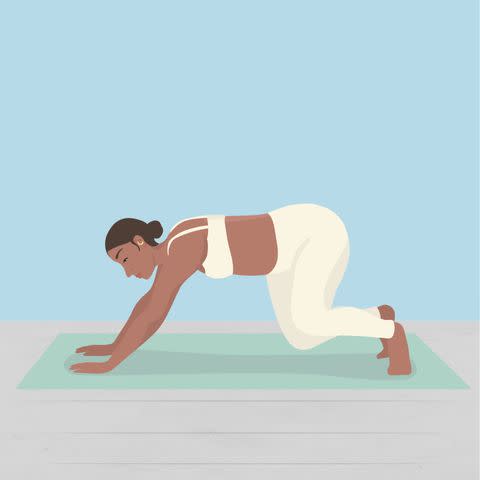
This exercise engages your obliques and deep core muscles like your transverse abdominis, which is essential for supporting and stabilizing the spine.
Start in a high plank position (on your hands with straight arms). Twist your heels to one side and imagine gluing your inner thighs together. Inhale to prepare, then bend your legs and send your bottom back toward your heels, keeping your core strong and spine neutral. Exhale to shoot your body forward into plank position again, bringing your shoulders back over your wrists. Repeat.
Oblique Pikes
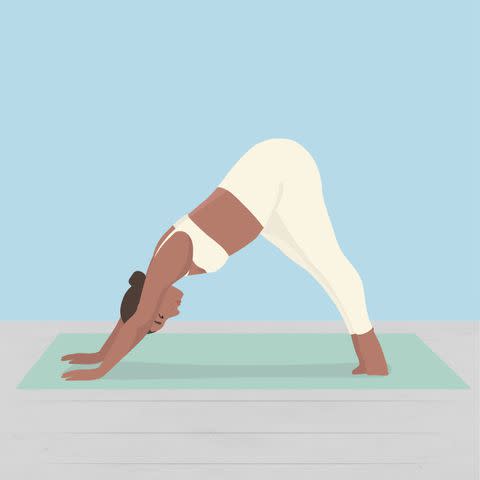
Grace Canaan
This exercise also works your obliques and deep core muscles, as well as your arms and shoulders.
Start in a high plank position. Keeping your heels together, tilt them over to one side—think about gluing them there (one hip will be slightly lower than the other). Inhale to prepare, then exhale as you lift your tailbone toward the ceiling, or "pike" your hips to the sky, focusing on lifting from the bottom oblique. Inhale and return to a plank, then repeat several times. Shift your heels over to the opposite side and repeat again.
Kneeling Side Bends
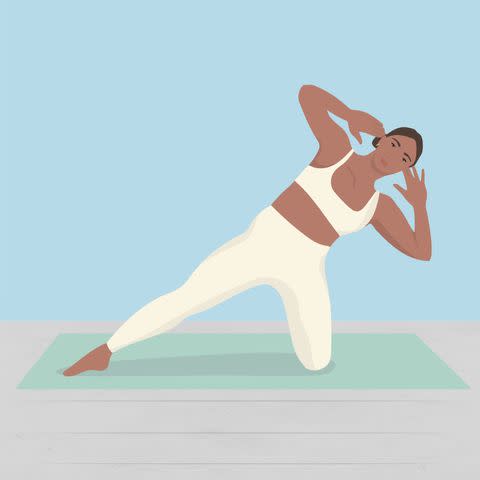
Grace Canaan
This exercise works the obliques and deep abs while improving balance and stability.
Kneel on your mat with your left knee under your hip and right leg extended to the side (like a long kick stand). Tuck your tailbone under slightly to engage your glutes. Drawing your fingertips to your temples, inhale to prepare and exhale slowly as you lower to your left elbow and lengthen your right-side oblique. Feel the recruitment of your right oblique as you exhale and return to the starting position, then repeat. Switch sides and repeat again. Add pulses, reaches, and holds to intensify the burn.
Related:8 Ways to Find Free Yoga Classes (Online or In Person)
For more Real Simple news, make sure to sign up for our newsletter!
Read the original article on Real Simple.
